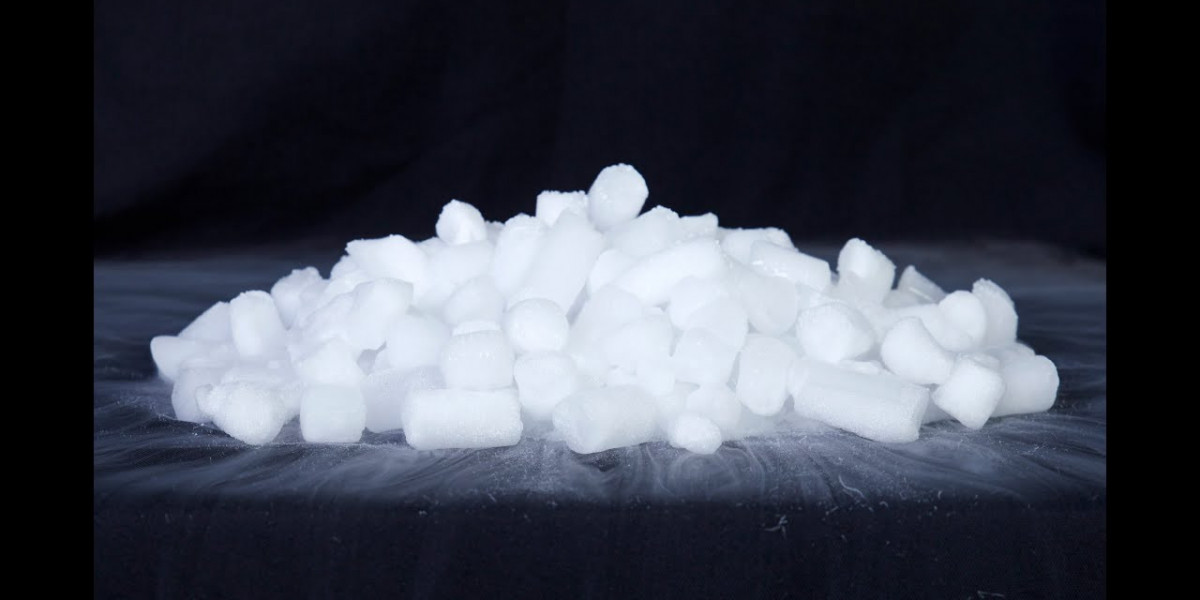What is Dry Ice?
Dry ice, also known as carbon dioxide or CO2 ice, is solid carbon dioxide made by compressing CO2 and cooling it until it turns into a solid white, translucent mass under typical storage conditions. Dry ice retains its solid form when temperatures are below -78°C or -108°F through a process known as sublimation. Instead of melting from a solid to a liquid, dry ice transitions directly from solid to gaseous carbon dioxide.
Properties and Characteristics of Dry Ice
As stated earlier, Dry Ice transforms from a solid to a gas through the process of sublimation - transitioning directly from a solid to a vapor - bypassing the liquid phase. Sublimation occurs when temperatures rise above the dry ice's sublimation point of -78°C or -108°F. It gives off carbon dioxide gas which dissipates into the surrounding air. This is why dry ice appears to 'disappear' over time when left at room temperature.
Dry ice is about 20 times more effective per unit mass at producing cold than an equal mass of water ice. It has an extremely low temperature that can cause frostbite upon skin contact if not handled properly. The cold produced by dry ice can cause freezer burn-like damage when exposed to skin for prolonged periods. Other key properties include being harmless and non-toxic but capable of producing carbon dioxide gas that can displace oxygen in poorly ventilated areas.
Uses and Applications of Dry Ice
Dry ice finds wide usage in various fields due to its ability to produce very low temperatures through sublimation. Some common applications include:
- Food and drink transportation: Used to keep products frozen or chilled during transportation. Dry ice sublimates to produce cold without adding water.
- Industrial cooling: Provides cooling in industrial processes such as freezing and chilling, freezing food products, cold storage, cryogenic and freeze drying applications.
- Medical applications: Dry ice is used to cool medical equipment, transport biologics or preserve specimens. It's also sometimes used by dermatologists for minor skin treatments.
- Entertainment industry: Creates theatrical fog, smoke or bubble effects in stage performances, movies etc. by boiling off carbon dioxide gas.
- Sanitation: Dry ice pellets are used for cleaning and sanitizing surfaces in food processing plants, labs, breweries etc.
- Pest control: Dry ice pellets can flush out rodents and insects from hard to reach areas like ship compartments or grain silos.
Availability, Storage and Handling of Dry Ice
Dry ice is commercially available in blocks or pellets of various sizes ranging from 0.25 kg to over 20 kg. It is usually packaged in thermally insulated dry ice containers or dry shippers which help retain cold temperature for over 24 hours.
Some key guidelines for safe handling and storage of dry ice include:
- Wearing protective gloves while handling as it can cause frostbite.
- Storing in a well ventilated area below -78°C to prevent oxygen deprivation if a lot is present.
- Never storing in completely sealed containers as pressure can build up from sublimating carbon dioxide.
- Using caution around eyes and avoid touching skin for prolonged periods.
- Allowing pellets to fully sublime before discarding empty container.
With proper care, dry ice is a remarkably useful substance for its ability to produce low temperatures on demand through sublimation. Following safety guidelines ensures it can be handled without any health risks.
In the dry ice or solid carbon dioxide is a fascinating substance due to its unique ability to sublimate directly from solid to gas, bypassing the liquid phase. Through this process it maintains extremely low temperatures, finding diverse applications from transportation and storage of perishables to industrial cooling and special effects. With appropriate handling precautions, dry ice is highly versatile yet safe to use.
Get This Report in Japanese Language:
Get This Report in Korean Language:
Explore More Related Article On-Wine Market
About Author:
Money Singh is a seasoned content writer with over four years of experience in the market research sector. Her expertise spans various industries, including food and beverages, biotechnology, chemical and materials, defense and aerospace, consumer goods, etc. (https://www.linkedin.com/in/money-singh-590844163)









